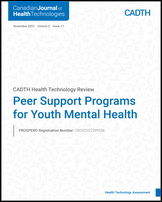| Conley et al. (2020)39 Associated: Hundert et al. (2021)40 provided a 2-month follow-up of a subset of participants (n = 55) US Source of funding: Not reported | Study design: Open-label RCT Setting: Three university campuses. Participants were identified through flyers, emails, social media posts, student services offices, staffed informational displays on campus | Inclusion criteria: University students of age ≥ 18 years, who self-identify as having a mental health concern. Exclusion criteria: None reported Study participants: Number of participants, N = 118; HOP-C group, n = 63, control group, n = 55. % Female: 82.2%, n = 97 % Male :17.8%, n = 21 Mean (SD) age: HOP-C group = 20.24 (2.87) y control group = 21.35 (6.62) y % Race, White: 68.6%, Asian American:17.8%, African American 7.6%, Native American and Pacific Islander: <1%. % Ethnicity, non-Hispanic 82.2.% (other ethnicities NR) % Heterosexual: 66.9%, bisexual 18.6%, gay or lesbian: 6.8%, other: 7.6% % Clinically elevated depression: 85.5% % Clinically elevated anxiety: 69.2% | Intervention: Honest, Open, Proud–College (HOP-C), a peer-led in-person group intervention developed to empower participants with self-stigma, disclosing their mental health concerns, and to reduce mental illness–related self-stigma. The intervention comprised 2-hour core sessions weekly for 3 weeks and a booster workshop 2 to 3 weeks later.51 Peer facilitators were trained students who identify as living with mental health concerns. A 2-day training was provided to the peer facilitators. A manual for conducting the sessions were available to the facilitators.52 Comparator: Waitlist control | Self-stigma (SSMIS-SF); Stress and coping (Stigma Stress Scale); self-efficacy about disclosure (single item); depression symptoms (CES-D-10); anxiety symptoms (GAD-7); no safety outcomes were reported Effectiveness outcomes were assessed at baseline (T0), after core sessions (post-intervention, T1), and after the booster session (post-booster, T2).39 An additional assessment 5 weeks after the booster session (2 months after core sessions) was conducted in a subset of participants for the follow-up analysis.40 |
| Mulfinger et al. (2018)50 Germany Source of funding: Nachwuchsakademie Versorgungsforschung Baden-W€urttemberg and the Otto-K€assbohrer Foundation | Study design: Open-label RCT Setting: Participants recruited from 4 sites: 3 departments of child and adolescent psychiatry (in patient wards, day clinics and outpatient clinics) and an independent psychiatry outpatient clinic. Recruitment period May 2016 to February 2017. | Inclusion criteria: Adolescents aged 13 to 18 years with at least 1 self-reported current axis I or axis II disorder, and a moderate (or severe) level of self-reported disclosure-related distress. Exclusion criteria: Intellectual disability, diagnosis of substance or alcohol disorder in the absence of a non-substance related psychiatric disorder, organic disorder Study participants: Number of participants, N = 98; HOP group, n =49; Control group, n =49 % female: 67% (HOP group), 71% (control group) Mean (SD) age: HOP group = 15.8 (1.2) y Control group = 15.7 (1.1) y % Clinical depression: 59.1% % Clinical anxiety: 17.3% | Intervention: Peer-led Honest, Open, Proud (HOP) program aimed to empower participants with disclosing their mental illness in different settings + treatment as usual. The intervention comprised 2-hour core sessions per week for 3 weeks. Sessions were facilitated by peer supporters and young mental health professionals. Peer facilitators were young adults with lived experience of a mental illness. Training was provided to the peer and clinical facilitators. A young mental health professional was also present in the sessions. A manual for conducting the sessions was available to the facilitators.52 Comparator: Treatment as usual | Stigma stress (Stigma Stress Scale); HRQoL (KIDSCREEN-10 index); empowerment (Empowerment Scale); disclosure-related distress (by a 4-item questionnaire); hopelessness (Beck’s Hopelessness Scale); self-stigma (ISMI-SF and SSMIS-SF); help-seeking (General Help-Seeking Questionnaire), recovery (Self-Identified Stage of Recovery Scale); secrecy and social withdrawal (Link’s Stigma Coping Orientation Scales); depressive symptoms (CES-D); no safety outcomes were reported Efficacy outcomes were assessed baseline (T0), after core sessions (post-intervention, T1), and follow-up 6 weeks after baseline (T2). |
